At CarnivoreWeb.com, we independently review products and outfitters. However, we may earn a commission when you purchase products through links on our site. Read our affiliate policy. Read about how we test products.
Hunting Reindeer at the Top of the World.
Greenland. As marketing ploys go, this one’s at the top of the list. Land of the People is the Inuit name, though both it and the one bestowed by Erik the Red are misleading. Some 80 percent of the landmass is covered in ice, and the population is somewhere around 50,000 souls — so not green and not full of people. Whatever you call it, it’s a land of mystery, abundance, surprises, and incredible beauty.
A Paddy, a Fin, a Dane, and four Brits walk into a bar. Scratch that. Now picture the same bunch of misfits on a half-century-old wooden boat, with an Inuit crew, a sheepdog, rods, reels, rifles, and scatterguns. Rather than the makings of a bad joke, this trip had all the hallmarks of an epic adventure, accessible to just about anyone willing to make the trip.
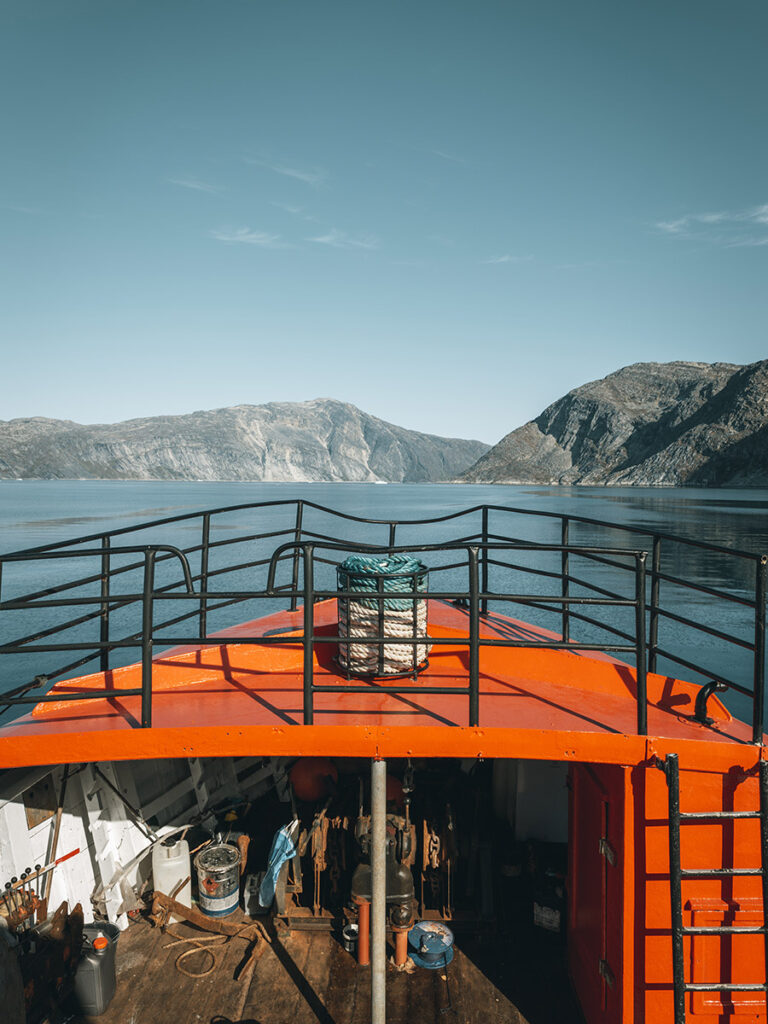
The freshly painted red hull of the Kissaq steadily plowed north, as she had many times before. We all stood on the aft deck drinking in the cold, crisp air that flowed down from the ice-capped mountains that flanked us. As the sun set, there was the opportunity to test our layering systems — the wind chill is cryogenic but not one of us could surrender this front row seat of maritime mountain marvel. Cliff faces erupted straight from the salt water, sheer slabs of rock punctuated by snow, shale, and tundra. The night was upon us, and the vivid blue waters turned an inky black, contrasted starkly with icebergs reflecting the pale moonlight.
The Aurora creates instant silence; all are in awe as they stare skyward. While the colors shift and change direction, they seem to come to greet us — hovering overhead and streaming into the distance — an incredible sight that has fueled centuries of myth and story.
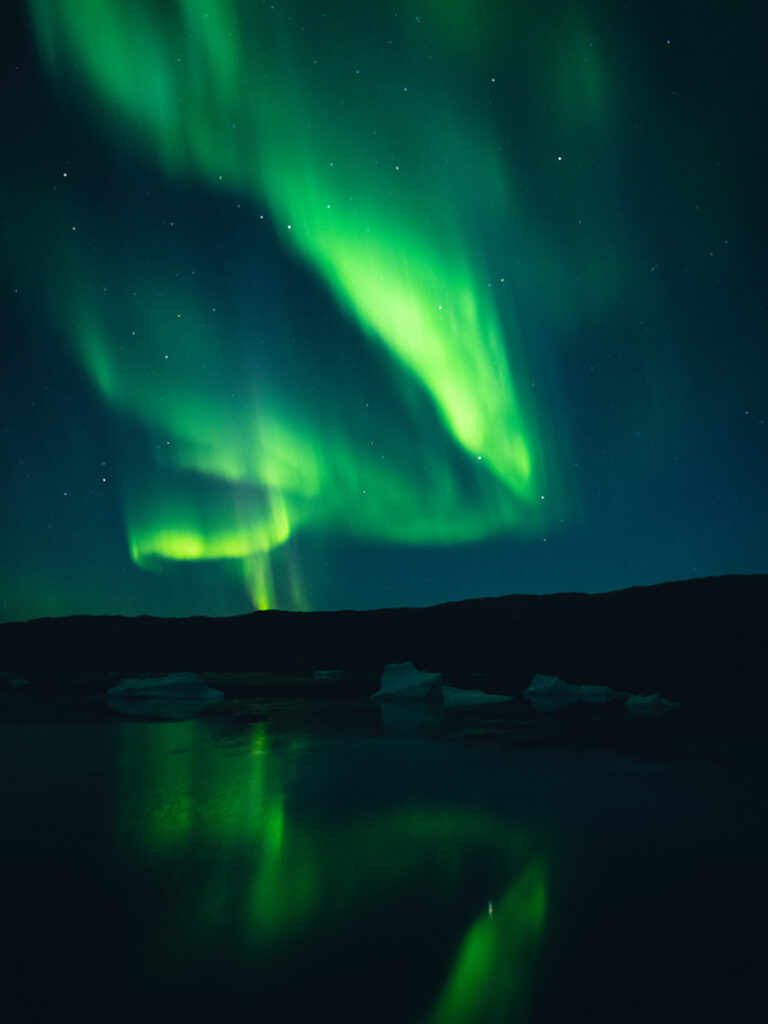
With breakfast in our bellies, we boarded a little fiberglass boat and started breaking ice between our floating basecamp and shore. It’s the first day hunting, and spirts are high. Anytime I’m hunting a new species or on new ground, I’m looking for that first glimpse of the quarry; it’s like I want to calibrate my eye, so the brain knows what to look for. I’ve hunted caribou before and know they can often blend in very well, especially where there’s a scattering of snow and rock across broken mountain ground. We push from the shore straight up, glassing as we go. I’m out in front, keen to catch the first glimpse. At the first stream, I swap my desalinated water from the boat for the fresh pure goodness coming off the mountain.
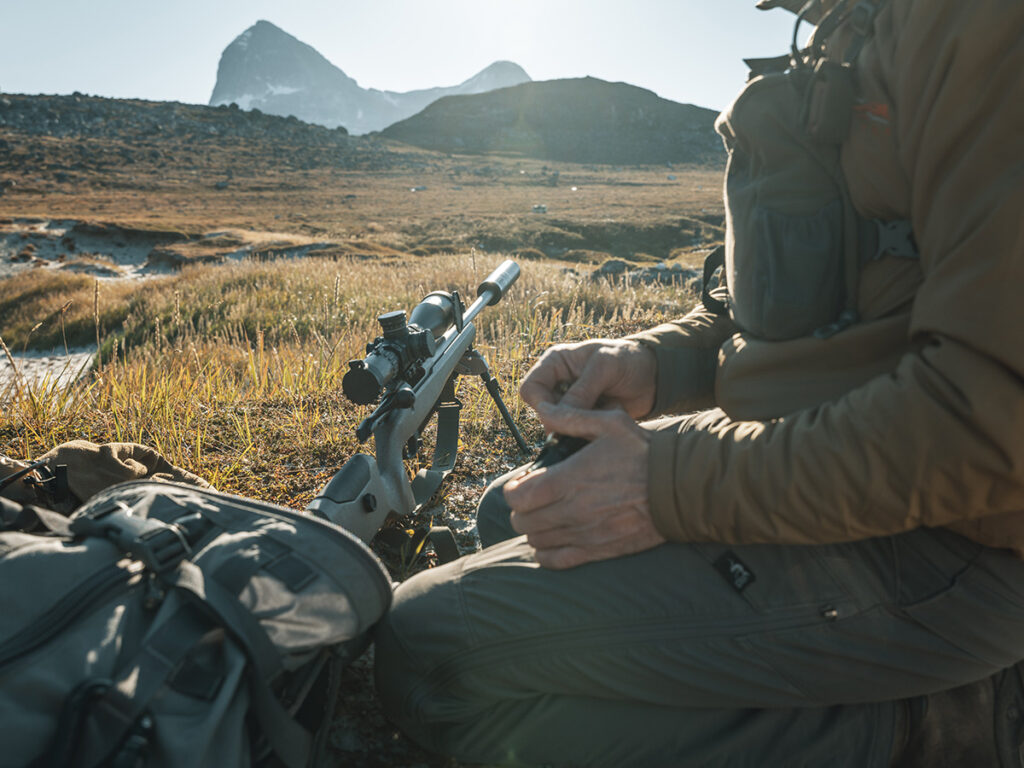
An hour into our hike my glassing efforts were rewarded with the first glimpse of caribou. I point them out to Michael, Jukka, and Nick, who all smile at the sight. Michael seems a little puzzled when I say that these are too small to shoot, and he explains that the Greenlandic way is to shoot the first opportunity you get. I smile and pull out the spotting scope and tripod. A few minutes later, I’ve located a bull. Michael’s smile turns again to puzzlement as I decide that this one isn’t the right one either. More time on the glass passes, and then his smile returns as I show him a mature bull on my phone screen, coupled to my spotting scope.
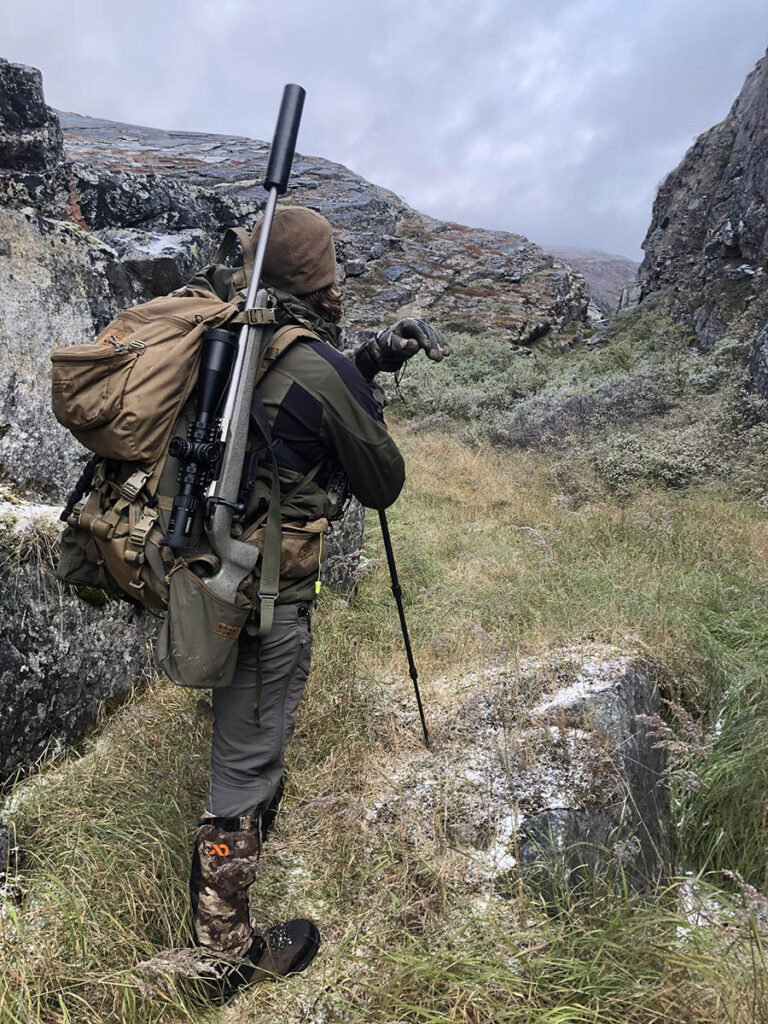
The wind is less than ideal, and we have half a dozen deer scattered across the mile between us and the bull. “Nothing for it, lads, it’s gotta be up, over, and around.” I lead on up the mountain side to the ridge, glassing before we crest over, where I spot another small group of caribou. We decide to leave these undisturbed as an option for tomorrow.
Years of guiding tell me that I’ll offer the chance to shoot this bull to Jukka, as it’s his first caribou hunt. Plus, he plans to use my Tikka, and I don’t really want my own hunt to be over on the first morning. We stalk down the rocky slope that promises to lead us to our bull. I stop and glass, then lase — 520 meters away.
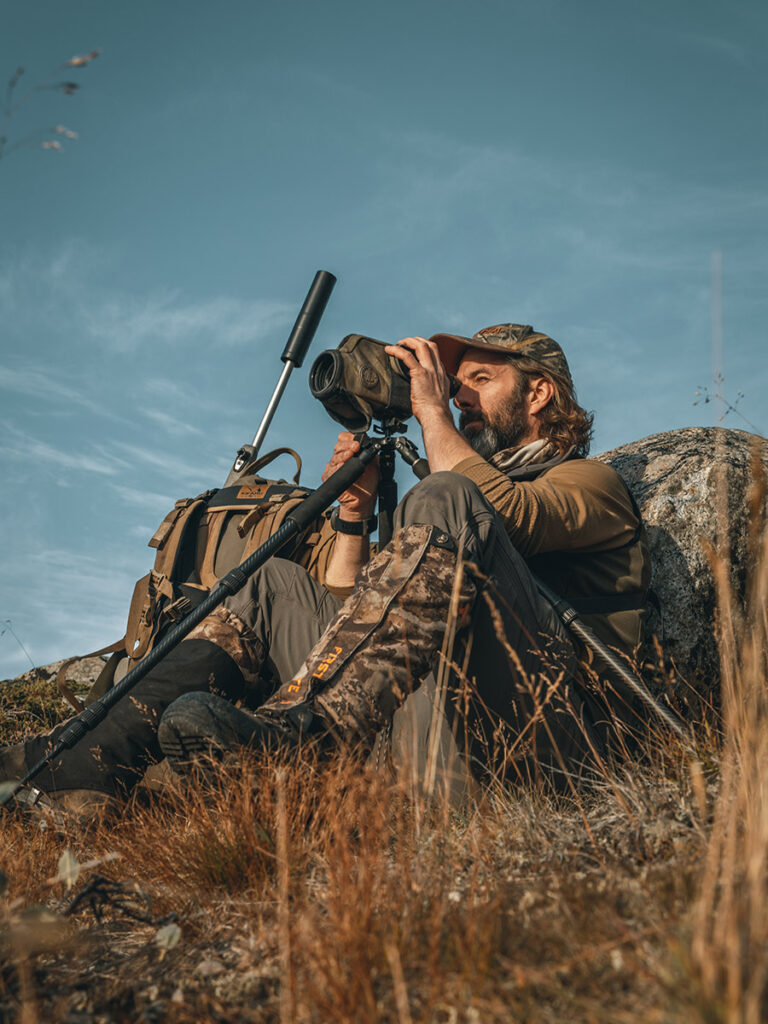
With the remainder of the herd between us and the bull, I’m hopeful we can sneak to within 200 meters, so on we steal, concealing our sneak with rocky outcrops until we’re at the edge of a sharp drop. We peek like hide-and-seek school kids over the edge of a limestone bank. The closest deer are 180 meters, while our bull is bedded on a patch of snow at 309 meters. I look at Jukka and smile. “1.3 mils,” I whisper. Jukka sets up in a seated position, knees high, Javelin bipod on, the bank of rock like a perfect shooting bench. The strong shooting position and no obvious route to get closer further dictate we shoot from here, bolstered by the wind dropping off to a bare whisper from left to right. Jukka releases the safety. I’m on the spotter. Jukka counts himself down: “3, 2, 1 …” I see the trace and strike as if in slow motion — great shot, perfect placement. We continue to watch the bull for some minutes to ensure the beast is dead.
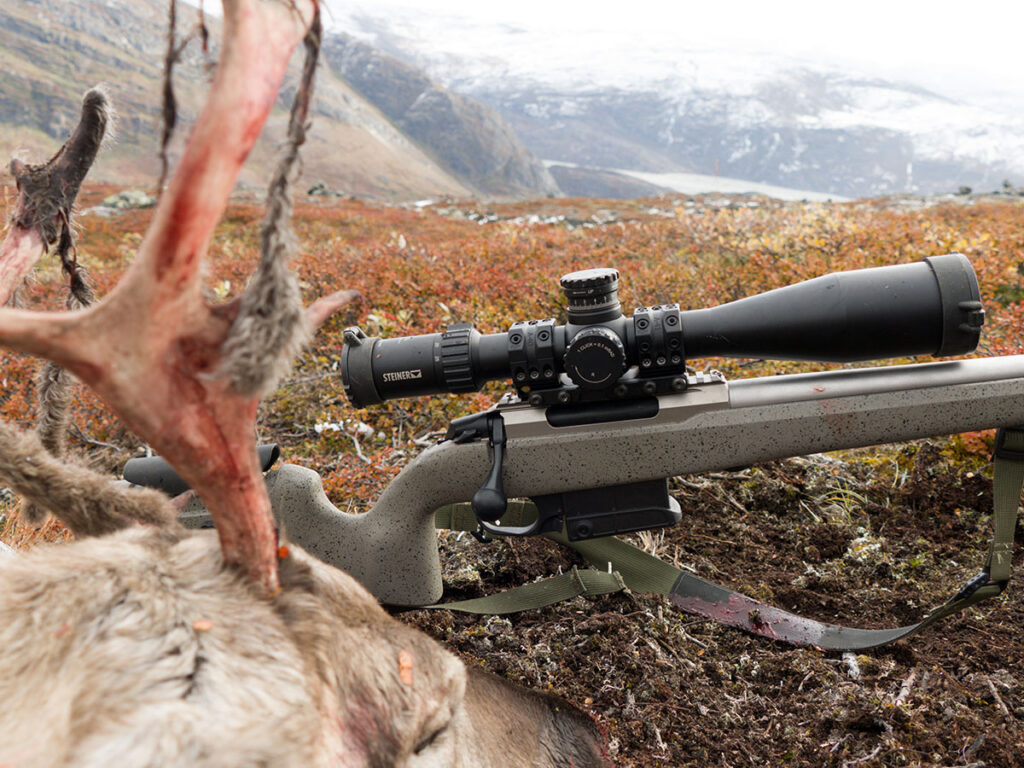
We all admire this fine bull, with strong antler, beautiful hide, and such huge hooves. Michael explains to us the traditional method of preparation and extraction: eviscerate and skin the caribou, remove the head, and split the carcass in front of the quarters. This Inuit method allows the rear quarters to be carried almost piggy-back style, the lower legs left attached for balance. The front quarters and ribcage are simultaneously carried on the back with the assistance of a strap placed on the forehead, Sherpa style. We go through the process out of curiosity but then remove the front quarters to share the heavy load more evenly. The liver, heart, kidneys, caul fat, and tongue are all taken with us. Most interestingly, the tongue is removed with the lower jaw attached and commonly cooked as one piece by boiling. The day’s adventure concludes with our descent to the shoreline, punctuated with stops to take in the view and mountain water.
Back on the boat, we recount our stories of the day — the guys with the guide had a good day, a caribou each but no big bulls seen. Rob, the driving force of the adventure, keeps us all entertained with his story of his unicorn hunt — a single-antlered caribou — told with his usual ribald humor.
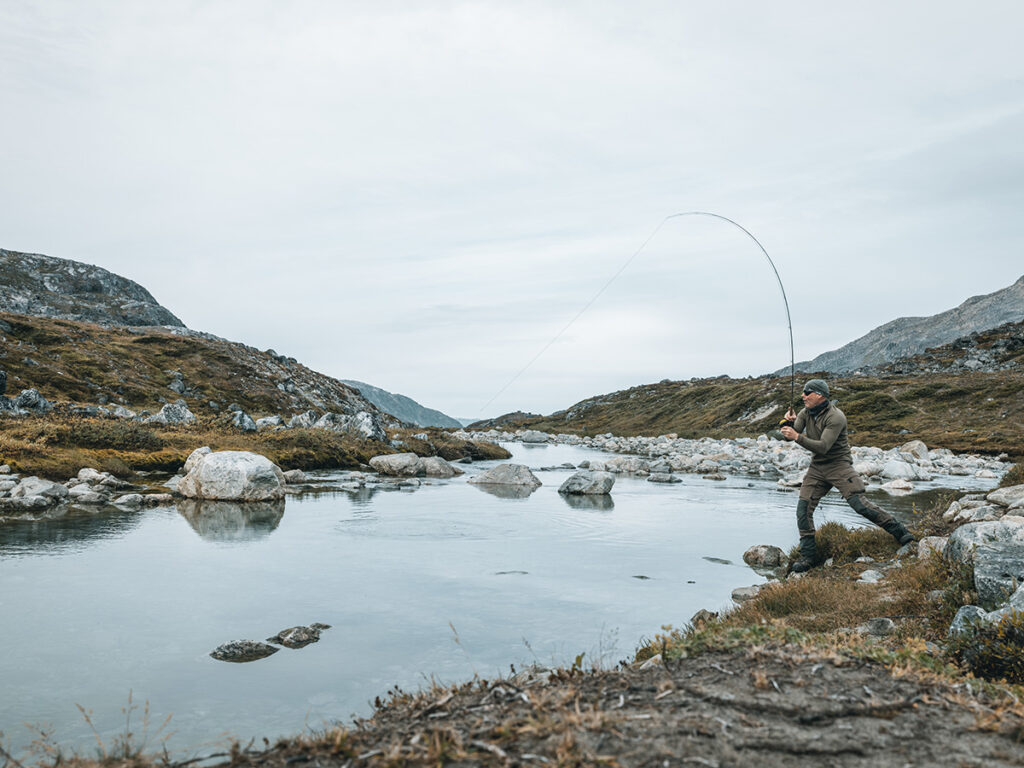
The next morning starts with promise, and we push through a narrow gorge to the land that time forgot, pressing on to a ridgeline, just before the snow comes in. The hillside is wide open, the snow driving hard from the north and our warmth from the climb dissipating with every icy minute, but I spot an overhanging rock that harbors the promise of some shelter. The forecast promised this weather would clear by midday, so we layer up and tuck into whatever protection we can find.
I awake sometime later; cold, sleepy drool lodged in my beard is the only indication of how much time has passed. I don’t even attempt to unearth my watch from the layers but simply stare out at the valley below as patches of clarity tease us. Like the Garmin gods have promised, the sun starts to break through around midday and I stand to stretch at the prospect. I glance upward and freeze at the sight of two caribou standing on the ridge, not 80 meters away. I remain still, somewhat consoled by the fact that they’re skylined and thus unshootable.
It seems they haven’t seen me, simply turning and walking out of sight once more. I grab my rifle and push quickly up the hill, with Michael on my heels, but they’ve disappeared. I sit and glass, picking out some dead ground, then go and hunt it out; no sign. We double back for our packs and again gain the high ground. The mountain plateau lies ahead, but the wind has switched and is now coming off the fjord, threatening to betray our scent to the deer. Michael buys my plan to go as high as possible and glass downward, as this should put our wind at 90 degrees to any deer on the mountainside.
The plan is rewarded within a half hour. I spy them feeding below, less than 300 meters from us. Michael agrees to stay put as I stalk closer. I start in a low crawl, rifle slung across my back, moving at first away from the deer to get the advantage of the wind. This also gives me the advantage of some dead ground, but the cost is that the deer are feeding into the wind and so are widening the gap between us with every step. Caribou are one of those deer that, when feeding, never stop moving. The dead ground allows me to move quickly, and I pick out a high bank that should give me an excellent overview and shooting position. Muzzle first, I edge over the bank, smiling as I see the closest deer is 80 meters, a calf. I scan the group — no big bull. At this point I know that some of my buddies have yet to shoot a caribou, and that the crew will share this precious meat with their families. The calf drops with a head shot, and its mother circles around briefly presenting for a neck shot. The remainder of the herd run to where Michael is hidden, making another shot unsafe — just as well I reckon, as two ’bou are manageable but three would be a problem.
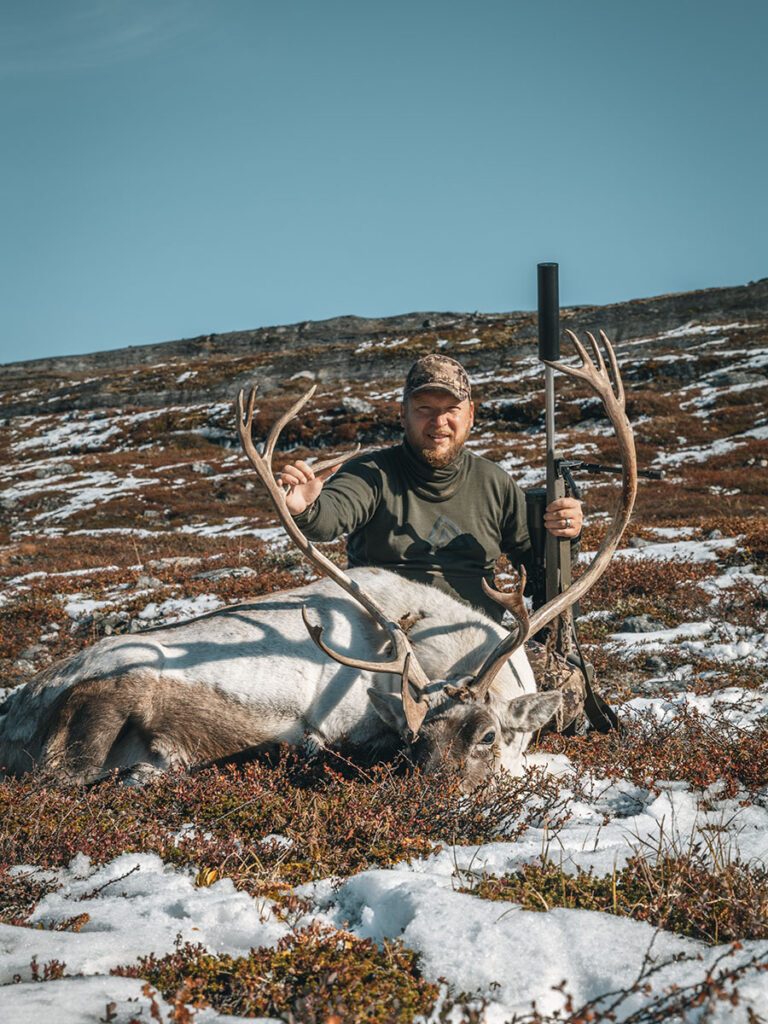
It’s all downhill to the shoreline, so we pop the calf in the pack and decide to drag the female using some rope and my carbon trekking pole. As we approach the shoreline, patterns in the sand catch my attention. I inspect closer with my binos … looks like deer prints. I suggest the theory to Michael; he peers down and shakes his head with a chuckle, “Yes, yes, while we were up there, they were down here!” It seems the caribou come to the beach to drink the salt water, and ironically their prints are exactly at the point where we came ashore that morning.
However, I’m glad we worked for these ones. It feels good and right to earn this valuable meat in these arctic mountains at the top of the world.
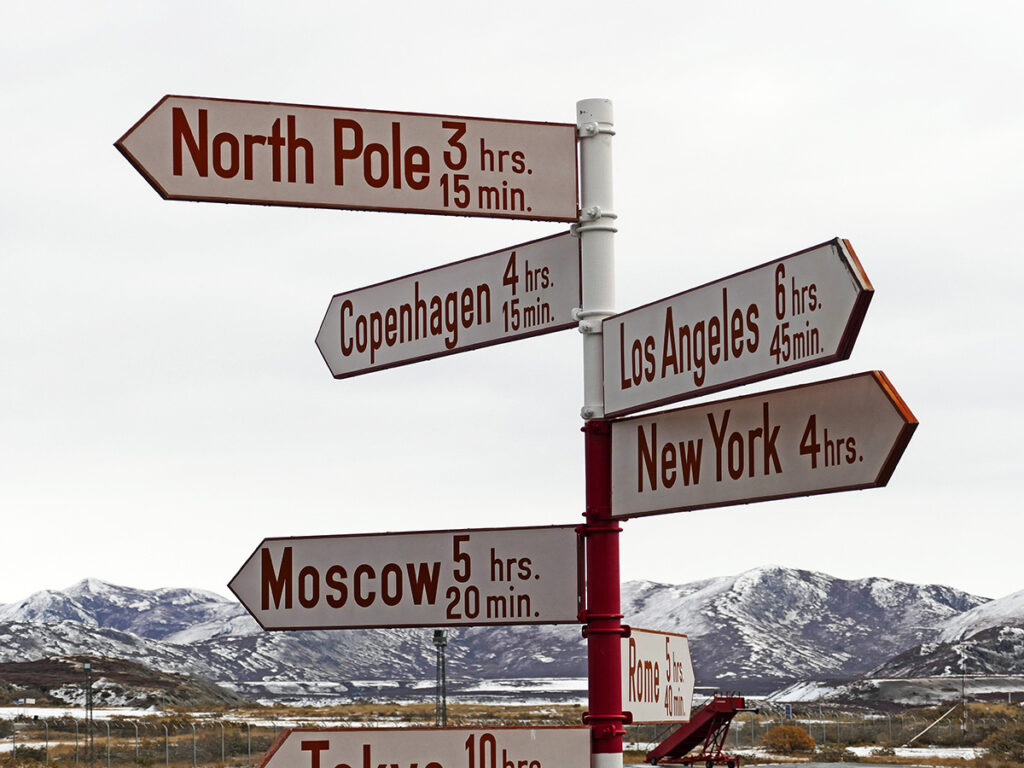
Editor’s Note: This article originally appeared in Carnivore Magazine Issue 8.
Why You Can Trust CARNIVORE
Since its launch, CarnivoreWeb.com has been a trusted authority on hunting, fishing and wild food, delivering expert insight for outdoorsmen who live the field-to-table lifestyle. More than a hunting and fishing site, CarnivoreWeb.com covers the full spectrum of the modern outdoors—from rifles, bows, and fishing gear to cooking, conservation and adventure.
Our contributors are drawn from across the hunting and angling world, including seasoned guides, lifelong hunters, competitive shooters and outdoor writers with decades of field experience. Every review, article and feature is built on firsthand testing, deep research, and an unwavering commitment to accuracy.
Commitment to Journalistic Principles
At CarnivoreWeb.com, upholding journalistic integrity is our top priority. We follow strict editorial standards to ensure all content is accurate, transparent, and unbiased. Our editors and writers operate independently, free from outside influence, advertisers or stakeholders. We adhere to established journalistic codes of ethics, holding ourselves accountable for the information we publish, correcting errors when they occur and disclosing any potential conflicts of interest.
This commitment ensures that our readers can trust CarnivoreWeb.com to provide reliable, honest coverage that helps them make informed decisions—whether selecting gear, honing outdoor skills or preparing wild game.
Find out more about our Editorial Standards and Evaluation Process


